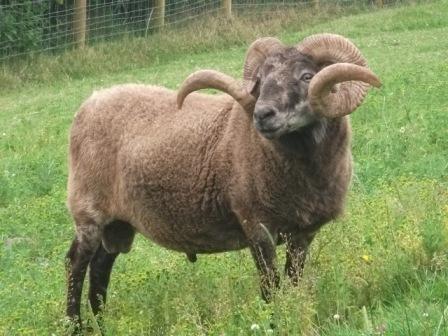Type the name of the breed you're looking for below
[wpdreams_ajaxsearchlite] Don't see the breed your're looking for? Click here and let us know!
Boreray sheep
| Place of Origin | Scotland |
| Origin | The Boreray is a breed of sheep originating on the St Kilda archipelago off the west coast of Scotland and surviving as a feral animal on one of the islands, Boreray. It is primarily a meat breed. Also known as the Boreray Blackface or Hebridean Blackface, it is the one of the rarest breeds of sheep in the United Kingdom, and is one of the Northern European short-tailed sheep group of breeds. It is the only sheep breed to be listed in "Category 1: Critical" by the Rare Breeds Survival Trust, because fewer than 300 registered breeding female Borerays are known to exist. The Boreray should not be confused with the Soay sheep, also from the St Kilda archipelago, nor with the Hebridean sheep, which was formerly called the "St Kilda", although it is probably not in fact derived from the St Kilda sheep Until the late eighteenth century, the domesticated sheep throughout the Scottish Highlands and Islands belonged to a type called the Scottish Dunface or Old Scottish Shortwool, which was probably similar to the sheep kept in the whole of northern and western Europe up to the Iron Age. A local variety of Dunface was kept on the two main St Kilda islands of Boreray and Hirta by the crofters of the islands, who lived on Hirta, the largest island of the St Kilda archipelago. In contrast the sheep on the extremely steep and inaccessible St Kilda island of Soay belonged to the owner of the islands, the Steward, and lived as feral animals. These Soay sheep are smaller and generally brown, remaining similar to the earliest type of sheep brought to Europe during the Neolithic. In the mid-eighteenth century the crofters' sheep were described as being "of the smallest kind", with short, coarse wool, and all having horns – usually one pair, but often two pairs. At that time there were about 1,000 of these sheep on Hirta and about 400 on Boreray. In the late nineteenth century the crofters' sheep were cross-bred with Scottish Blackface sheep, which by then had replaced the Dunface throughout mainland Scotland. When the St Kilda archipelago's human inhabitants were evacuated in 1930, the sheep of Hirta were also removed and in 1932 they were replaced by Soays, which still live there as well as on Soay itself. Meanwhile the remaining sheep on Boreray were left to become feral; these became the only survivors of the crofters' sheep, and one of the few surviving descendants of the Dunface. In the 1970s half a dozen of them were exported to form the basis of a breeding population on the mainland, but the majority of Borerays still remain on the island. |
| Purpose | Meat |
| Characteristics | Despite being partially derived from a long-tailed breed (the Scottish Blackface), Borerays display characteristics which group them with other northern European short-tailed sheep. They are amongst the smallest sheep in the British Isles, with mature ewes weighing 28 kg (62 lb) and standing 55 cm (22 in) at the withers. They have naturally short tails, which do not require docking. They also moult their fleece naturally, rather than having to be shorn annually, though older individuals do not moult as easily and may require additional shearing. Fleeces are grey or creamy white on the body, though darker individuals occur whose colouring is similar to the Soay sheep. Rough in quality, the wool is mostly used in the creation of tweeds or carpet yarns. The face and legs are wool-free and black and white, with the proportions varying between individuals. Both sexes of the Boreray display horns, although two pairs are no longer found. The horns on the females tend to be less thick than those on the males and while they curve they do not form complete spirals. Wethers have thicker horns than the ewes, but not as large or as impressive as those of complete rams. Mature rams can grow especially large, spiral horns which may be used for shepherd's-crook-making or other crafts. |



